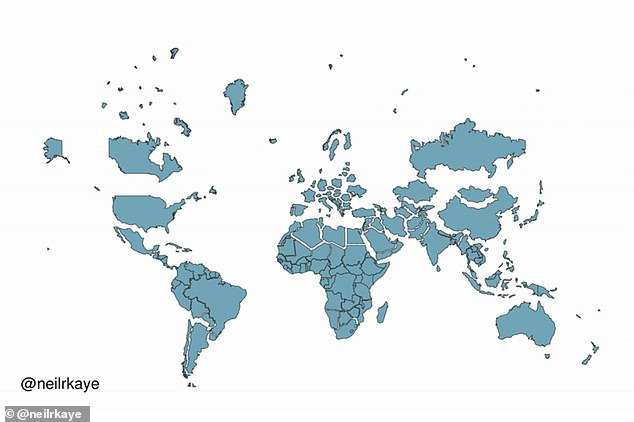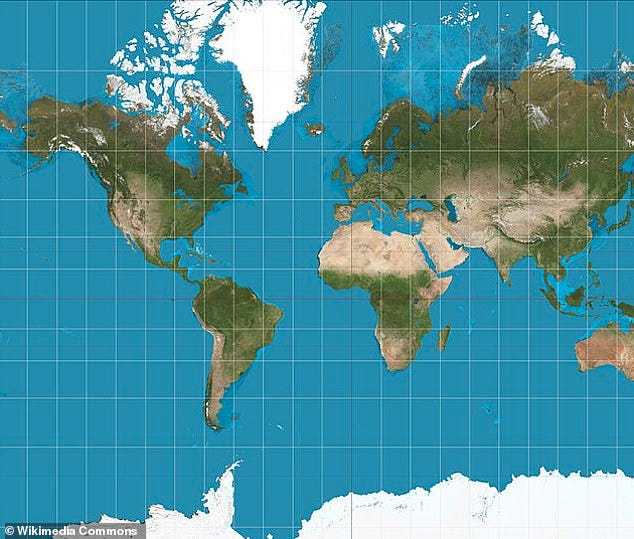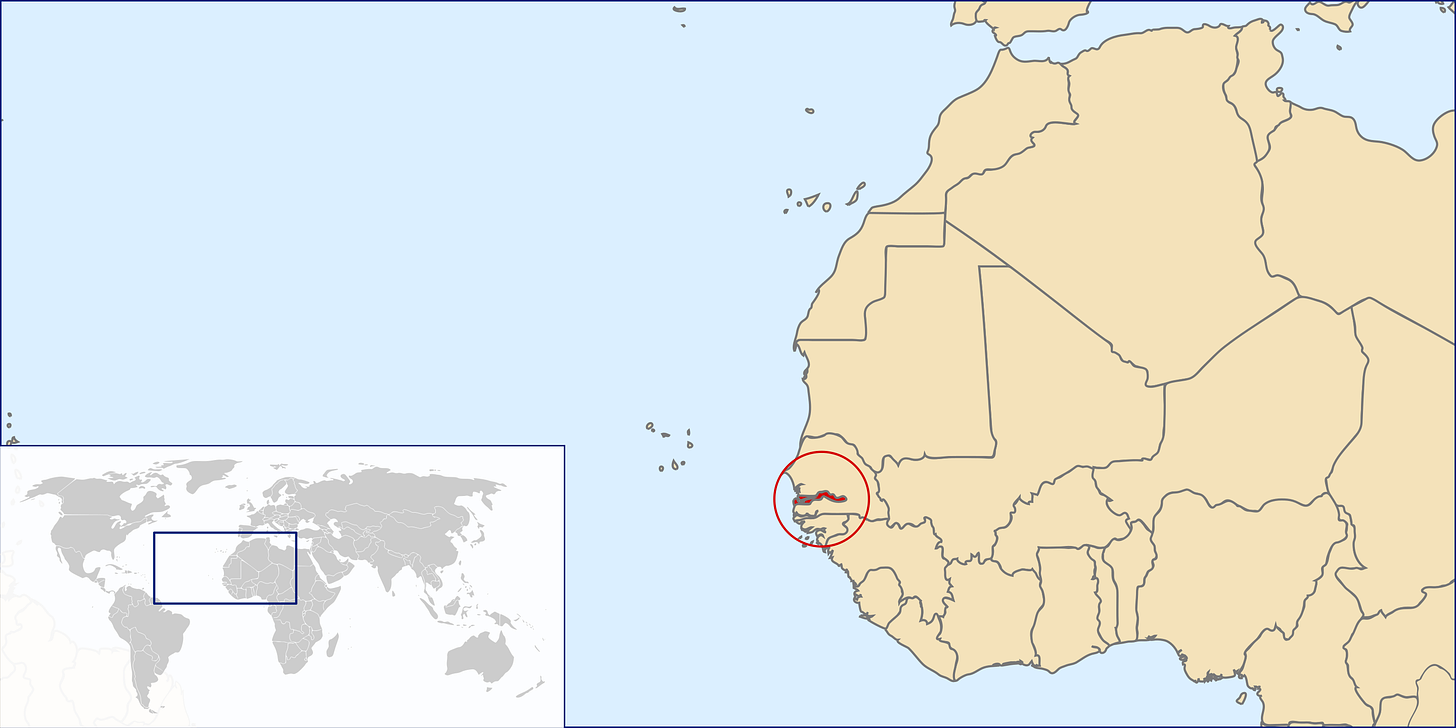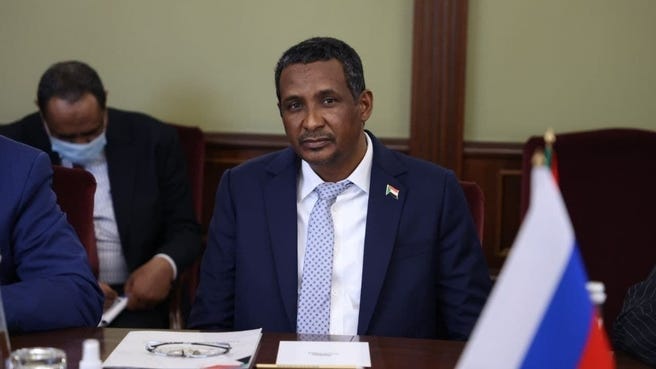🔅 Why the Map of Africa You Know Is Wrong
Plus: 🇬🇲 Justice For Gambia’s Yahya Jammeh's Henchman, 🇸🇸 Sudan Ceasefire and Hope, 🇹🇿 Tanzania Gets an IMF Boost, And much more... ☕
Photo of the day: Asmara, Eritrea

🔺 Nigerian SE: 51,606.49 (+0.49%)
🔻 Johannesburg SE: 77,711.33 (-0.52%)
🔻 Ghana SE: 2,735.74 (-0.01%)
🔻 Nairobi SE: 107.69 (-0.69%)
🔻 US S&P 500: 4,080.06 (-1.38%)
🔻 Shanghai Composite: 3,264.87 (-0.32%)
Bitcoin's Big Predictions | Standard Chartered is bullish on Bitcoin and says it could hit the big $100,000 by 2024. If this prediction comes true, it’ll be the perfect gift for all those folks who bought BTC at its peak in 2022 and then saw its value drop 65% by the end of the year. This could be the crypto rally to end all rallies, according to SC’s head of digital assets research, Geoff Kendrick, who cited several factors that could help Bitcoin reach its goal: recent banking sector turmoil, a Fed rate-hiking pause, and improved crypto mining profitability. But hey, we’ve heard predictions like this before: a Citi analyst said in November 2020 that Bitcoin could reach $318,000 by 2022.
*Data accurate as of the close of markets across the continent
GEOGRAPHY
Why the Map You Know Is Wrong

We've all grown up looking at maps of the world, but it turns out what we thought we knew may have been wrong all along.
Take Greenland, for example. It looks huge on the map, but it’s actually only 836,300 square miles, whereas Africa is 11.7 million square miles – 14 times larger.
So what are we missing?
It’s called world map distortion, and it’s all thanks to the Mercator map - the one we’ve all been taught since we were kids. It's been around since 1596, and it gives the right shapes of land masses, but at the cost of distorting their sizes in favour of the wealthy lands to the north.
It means that countries like Russia, Canada and Greenland look much bigger than they really are. Russia, for instance, appears to take up approximately 25 per cent of the Earth's surface on the Mercator map, when in reality it occupies a mere 5 per cent.
Why?
It turns out it’s impossible to portray the reality of the spherical globe on a flat surface – a problem that’s been haunting cartographers for centuries.
Any solutions to this problem?
Met Office climate data scientist Neil Kaye put UK’s Met Office data into Ggplot, a data visualisation package for statistical programming. He then created a two-dimensional representation of what the world really looks like, using a sterographic projection.
This new projection shows how countries in the northern hemisphere are much smaller than people typically think. Canada and Russia, for instance, appear much bigger on the Mercator map than they really are.
So if you’re looking for a more accurate view of the world, this surely is one to check out. And do consider, for a second, how big the African continent actually is compared to the rest of the world.
Share Baobab with friends and colleagues for free daily updates on African business, money, and current affairs.
OTHER HEADLINES
Across the Continent
🇬🇲 Justice Catching Up with Yahya Jammeh's Henchman | After fleeing The Gambia in 2016, former Interior Minister Ousman Sonko was arrested in Switzerland for his alleged involvement in crimes against humanity committed under the country's former authoritarian leader, Yahya Jammeh. Sonko's lawyer insists that some of the acts happened before Swiss laws against crimes against humanity were even in effect, but human rights activists in The Gambia are celebrating the indictment. The case will be heard in the Swiss Federal Criminal Court, and is expected to even put pressure on Equatorial Guinea to eventually extradite Jammeh himself. Jammeh had ruled The Gambia for over two decades, and was known for his authoritarianism and alleged abuses. He fled to Equatorial Guinea in 2017.
🇸🇸 Sudan: A Ceasefire and a New Hope | Sudan’s latest ceasefire — called at midnight on Monday — appears to be holding. The conflict, which has been raging since April 15th and left at least 400 people dead, has been described by the UN Secretary-General as risking “catastrophic conflagration” that could engulf the whole region and beyond. Sudan’s transition to civilian rule is a central sticking point in the conflict between the two military factions, led by President Abdel Fattah al-Burhan and his deputy Mohamed Hamdan Dagalo (known as Hemedti). The violence has had a major impact on civilians, with residents told to stay inside, food and water supplies running low, and water pipes being hit. It’s gotten so bad that some people have been forced to drink from the Nile.
🇹🇿 Tanzania Gets an IMF Boost | Tanzania just got a financial boost from the International Monetary Fund (IMF). The executive board of the IMF approved a $1.04 billion loan arrangement for the African nation last year and, on Monday, disbursed $153 million of that. The IMF noted that Tanzania is doing well, despite the tough global economic environment, but that the country should focus on boosting domestic revenue and streamlining bureaucracy. The IMF also advised Tanzania to “strengthen public finance management and oversight of state-owned enterprises” and “clear domestic arrears and prevent accumulation of new ones.” Sounds like Tanzania’s got some financial housekeeping to do, but the IMF’s vote of confidence is a good sign for the country’s economy.
FOOD FOR THOUGHT
Proverb of the Day
“God has created lands with lakes and bountiful rivers for man to live. And the wide deserts so that he can find his soul.”
— Tuareg Proverb.







